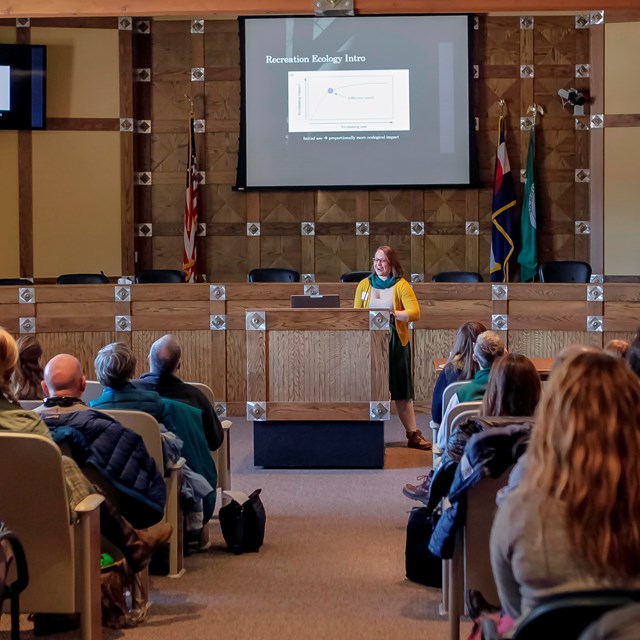
NPS Photo/A. Schonlau The BasicsWhen: March 4-5, 2026, 8:00am - 5:00pm Join Us Virtually!Select oral presentations will be live-streamed as part of this event. Check back here for timing and topics of virtual presentations, including information on how to join. Call for AbstractsWe invite abstract submissions for presentations during 2026 Rocky Mountain National Park Biennial Research Conference. Abstracts are encouraged to address the conference theme: “Park Stewardship: From Discovery to Decision”.The Biennial Research Conference encourages dialogue and learning among researchers, park staff, collaborators, and the public. We encourage you to present the “So What” of your work. Focus on the resource or management challenge(s) your research addresses, the results, and their connection to park management. Incorporate ways your research can advance resource stewardship, education, and visitor protection. How to Submit an AbstractThe abstract submission period is now closed. If you would like to inquire about a late submission, please contact ROMO_Research@nps.gov.Student Travel StipendsRocky Mountain National Park, in collaboration with Rocky Mountain Conservancy, is pleased to offer $500 travel stipends to support student attendance at the 2026 Biennial Research Conference.The application period for student travel stipends has been extended. All applications must be received by December 15, 2025 to ensure consideration. We will notify selected applicants by mid-January 2026. Eligibility:You must be a student currently enrolled in a degree program to be eligible. Your abstract must be accepted for presentation (oral, poster, or lightning talk) at the Biennial Research Conference to be eligible. How to Submit an Application:The application period is now closed. If you would like to inquire about a late submission, please contact ROMO_Research@nps.gov.Research Conference EventsOral PresentationsJoin us for focused oral presentation sessions where research partners and park staff share their latest work and findings. Each session is organized by theme and features 3-5 presentations of 20 minutes with time for audience questions after. These sessions provide an excellent opportunity to learn about current research, discover new methodologies, and engage directly with presenters. Whether you're looking to stay updated on developments in a certain field or connect with other professionals, these presentation sessions offer valuable insights and networking opportunities. Poster PresentationsThe poster session offers a relaxed environment to explore diverse research topics at your own pace and engage in one-on-one conversations with presenters. Move freely between posters, ask detailed questions, and discuss findings directly with researchers. This format encourages deeper discussions and allows you to focus on the work most relevant to your interests. It's an ideal setting for networking, discovering new collaborations, and getting personalized insights into current research. Conference Proceedings2026 conference proceedings will be available on this webpage approximately one month in advance of the event. |
Last updated: December 16, 2025


